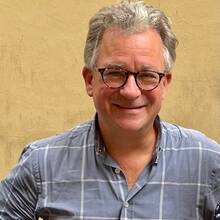[SANTA MARIA DEGLI ANGELI, ASSISI] The 200-odd religious leaders called here by Pope Benedict XVI have just watched a video about the history of the Assisi interfaith gatherings. It was well made: scenes of war contrasted with the commitments of religious leaders to peace. It was colourful, multilingual and global, and contained some moving and uplifting footage But it was very focussed on the popes, giving the impression that these gatherings have been entirely the initiatives of John Paul II and Benedict XVI, and that little has happened between the three gatherings of 1986, 2002 and today's.
What it missed out is that every year since 1987, the Community of Sant'Egidio -- which played a major role, along with Focolare and Cardinal Roger Etchegaray, in preparing Assisi I -- has held an annual prayer for peace in a different city"in the spirit of Assisi" and following a similar format (speeches, prayers, common pledge of peace), intended to develop a "spiritual humanism of peace".
The 1986 gathering was originally designed as a one-off event, with no plans to repeat it or continue it in any way. The fact that it has become embedded in the life of the Church is down to Sant'Egidio's annual gatherings and Focolare's conferences "in the spirit of Assisi".
That experience has been heavily drawn on to prepare today's event. What is billed as the great innovation of Assisi III, for example, the inclusion of nonbelievers, has happened for years at the annual Sant'Egidio gatherings.
Almost all of those here today have been regular participants in those events, the most recent of which was on 11 September in Munich. Without the relationships patiently built up by Sant'Egidio and Focolare today's event would be hard to imagine and almost impossible to organize.
So today's list of delegates contains few surprises. The downside is that those already converted to the Spirit of Assisi are speaking to each other. But the upside is that what is happening today is not a one-off but the fruit of 25 years of patiently and quietly building a spiritual humanism of peace among religious leaders.
Three movements were involved in meetings to organize today's event, and it's fitting that among today's delegates are their leaders: Andrea Riccardi, head of Sant'Egidio; Maria Voce, the leader of Focolare; and Fr Julian Carrion, CL's director.
They have no formal role in the proceedings and are to all extents invisible. But without them, there wouldn't be an Assisi III.







